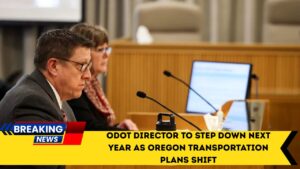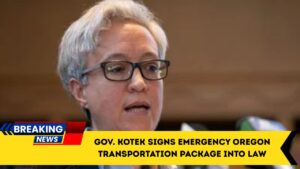With the federal government back in business after a 43-day shut-down period, the state of Oregon is seeing ripple effects across jobs, public services and the local economy.
From federal employees returning to work, to delayed benefits finally resuming, this article explores how the reopening of the federal government is already impacting Oregon, what figures are emerging, and what residents and businesses should watch.
Job Market & Federal Workforce in Oregon
One of the most direct impacts of the shutdown and reopening relates to jobs. Oregon is home to nearly 30,000 federal employees, making it one of the most federal-workforce-heavy states in the region.
During the shutdown, several Oregon‐based federal workers filed unemployment claims: 39 new claims in just the first two weeks.
As federal agencies resume operations, those furloughed workers are either returning to duty or awaiting back pay. The job stabilisation means local consumer confidence may begin to recover. However, some sectors remain dragged by delayed payments for services.
Public Services & Benefit Programs
Several public-service programs in Oregon felt the strain of the shutdown and are now in catch-up mode:
- The low-income home energy assistance programme (LIHEAP) remains unfunded at the state level until federal funds trickle in — putting tens of thousands of Oregonians at risk of delayed winter heating help.
- Federal agencies and services such as the Transportation Security Administration and Federal Aviation Administration are slowly returning to normal, but staffing shortages continue to produce delays, especially at airports and federal parks.
Economic Impacts & Local Business
The reopening is also having knock-on effects for the local economy:
- With federal employees paid again, local spending in cities such as Portland may rise, aiding small businesses near federal offices.
- Federal parks and tourist sites, vital to Oregon’s tourism economy, were partially impacted and reopening helps restore visitor traffic.
- However, because some programs remain paused, state and local governments must still cover funding gaps, putting stress on budgets for housing, social services and infrastructure.
Key Figures at a Glance
Here is a summary table of key data points showing the reopening’s impact in Oregon:
| Category | Metric | Notes |
|---|---|---|
| Federal employees in Oregon | ~30,000 | Workforce directly impacted by shutdown/reopening. |
| New unemployment claims during shutdown | 39 (first two weeks) | Federal worker claims in Oregon. |
| Program funds delayed (LIHEAP risk) | Tens of thousands at risk | Heating assistance delayed. |
| Duration of the shutdown | 43 days | Longest in U.S. history. |
What This Means for Residents & Businesses
- Residents: If you work for a federal agency or depend on federal services (benefits, parks, etc.), your situation is beginning to stabilise—but some delays still persist.
- Businesses: Retailers and restaurants near federal campuses may see reviving foot traffic now that federal staff are back. Tour-related businesses (parks, lodging) can expect improved tourist flows.
- Local governments: Must remain vigilant — though the reopening helps, funding gaps remain for certain federal blocks and may require short-term state support.
The reopening of the federal government is producing tangible effects across Oregon’s labour market, public services and local economy.
With around 30 000 federal employees and tens of thousands of residents reliant on federal benefits and programmes, the resumption of operations marks a meaningful step toward normalcy.
That said, some services remain in limbo, and local businesses and governments must remain alert.
As the pace of service recovery accelerates, Oregon’s economy stands to benefit — but the full impact will depend on how quickly federal funds flow and federal services stabilise for the long term.




